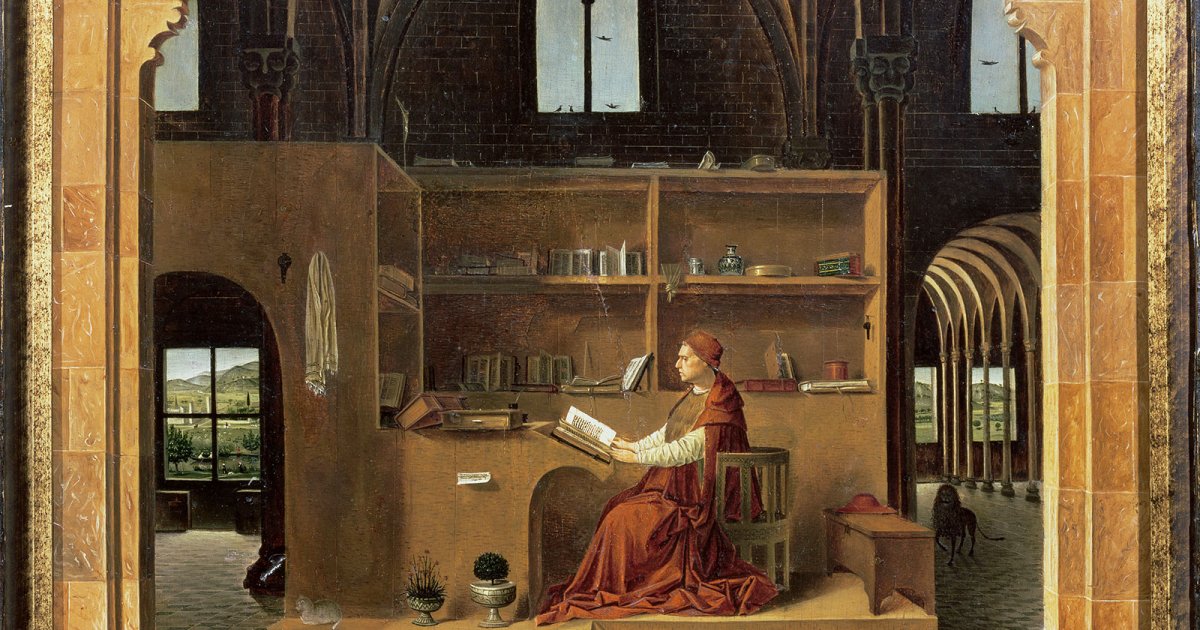NATIONAL GALLERY, St. Jerome Antonello Da Messina
 Language: English / USA
Language: English / USA
The room with Van Eyck's works also contains a painting that's interesting to compare with them, despite coming from a very different geographic context. The work titled St. Jerome in His Study by Antonello da Messina is a milestone in the history of relations between the Italian and Flemish schools in the 1400s.
First notice the contrast between the small dimensions of this picture and the great precision with which every detail is depicted. The scene is framed by an arch that pulls your gaze in, almost inviting you to enter. St Jerome is sitting at his desk, lost in a book. He's wearing the usual red robe of a cardinal, while you can see his hat on the bench behind him. The small wooden study is part of a Gothic building, most likely a church or a palace.
Stop to admire the care with which the furnishings and individual objects are depicted: the books open for the scholar's studies or closed on the shelves, the decorated majolica jars for conserving aromatic herbs... The geometric tile flooring directs your gaze towards the windows at the back: you can see some birds flying through the top windows, while the lower ones open onto a hilly landscape. The activity outside the study contrasts with the contemplative scenario taking place inside. The lion you can see on the right is a constant presence in depictions of the saint, and refers to the legend in which Jerome pulls a thorn from the paw of a lion, who then remains by his side.
But I should tell you that many other symbolic elements are hidden in this painting, such as the partridge and peacock you can see in the foreground at the base of the arch. The partridge represents the truth, as it was believed that these birds always recognised the voice of their true mother; the peacock is a symbol of immortality, as it was believed that its flesh was incorruptible.
Even the two plants depicted next to the cat on the ledge by the desk have a symbolic meaning: the boxwood is the emblem of faith in divine salvation and the geranium represents the Passion of Jesus.
FUN FACT: an art enthusiast once had the idea of looking at the painting in the mirror. And he discovered the number 1774, and the word "Messina". All written on two floor tiles. Try looking for it too if you have a mirror!



